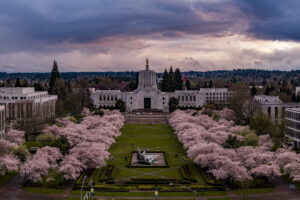Why does it seem so difficult for some people to understand the very marked difference between the FAA’s “hobby” rules and “commercial” rules when it comes to UAS (drone) flights in the National Airspace System (NAS)?
Our rules could not be any more clear.
It seems human nature wants to default to confusion rather than to understanding. We want everything made simple for us, yet try to find loopholes when we finally get the simplicity we want.
FAA’s UAS rules are a perfect example. We clamored for simplicity in the rules when the “333 Exemption” came out. Congress gave an exception to the rule, but the FAA made a confusing interpretation. We wanted black and white hobby answers when 107 came out. Hobbyists were still flying under Part 101 rules, which were tied to the 2012 FMRA Section 336. Confusing rules for sure from that. Then we got simplicity and black and white rules on October 5, 2018, when the 2018 FAA Reauthorization Act was signed by President Trump and became PL 115–254. It laid out exactly when a UAS flight was to be considered “hobby” or “recreational”, and when it wasn’t.
There is no grey area with drone flights in the U.S.
The exception to what is below would be E-COAs, Public COAs, and the very few remaining 44807 & 333 Exemptions. And if you’re not sure what those are, then don’t worry about it, they don’t apply to you. Read on below.
In simple terms, each and every sub-55 pound UAS (drone, r/c, glider, etc.) is considered a flight needing to be flown under 14 CFR, Part 107 rules (also incorrectly known as Commercial Rules) unless it qualifies for 49 USC 44809 of (AKA Section 349 of the 2018 FAA Reauthorization Act) titled EXCEPTION FOR LIMITED RECREATIONAL OPERATIONS OF UNMANNED AIRCRAFT. You’re either flying under the rules of 107, or you’re not. You’re either flying recreationally or not. There are no grey areas.
But as mentioned above, every day there are multiple threads, and numerous wrong answers in most threads about what a hobbyist can do, and what a non-hobbyist can do when it comes to drone flights in the NAS.
There is only one way for the vast majority of UAS operators to fly under the “exception” (there’s the word) to 107 rules. Section 44809 plainly states, “(a) In General.-Except as provided in subsection (e), and notwithstanding chapter 447 of title 49, United States Code, a person may operate a small unmanned aircraft without specific certification or operating authority from the Federal Aviation Administration if the operation adheres to all of the following limitations”.
It then goes on to list these eight limitations.
~ (1) The aircraft is flown strictly for recreational purposes.
~ (2*) The aircraft is operated in accordance with or within the programming of a community-based organization’s set of safety guidelines that are developed in coordination with the Federal Aviation Administration.
~(3) The aircraft is flown within the visual line of sight of the person operating the aircraft or a visual observer co-located and in direct communication with the operator.
~(4) The aircraft is operated in a manner that does not interfere with and gives way to any manned aircraft.
~(5) In Class B, Class C, or Class D airspace or within the lateral boundaries of the surface area of Class E airspace designated for an airport, the operator obtains prior authorization from the Administrator or designee before operating and complies with all airspace restrictions and prohibitions.
~(6) In Class G airspace, the aircraft is flown from the surface to not more than 400 feet above ground level and complies with all airspace restrictions and prohibitions.
~(7) The operator has passed an aeronautical knowledge and safety test described in subsection (g) and maintains proof of test passage to be made available to the Administrator or law enforcement upon request. (Coming June 1st timeframe)
~(8) The aircraft is registered and marked in accordance with chapter 441 of this title and proof of registration is made available to the Administrator or a designee of the Administrator or law enforcement upon request.
It’s that simple. Follow those 8 (7 for now) limitations, or fly under your Remote Pilot Certificate and associate rules. Which means you need to go get your 107.
If you notice, there an asterisks (*) above (2). This is because as of this writing (8/10/21), 44809 (2) is currently being developed. But even the FAA has stepped in to help folks avoid confusion there. They explain that “The FAA is incrementally rolling out these features and requirements.” So until that final section is “rolled out”, to qualify for a recreational flight you need to follow the other seven. Advisory Circular 91-57B explains the current work around.
At this point someone will usually say “yeah, but…” and try to find a loophole.
There isn’t one. Not anywhere. Don’t try.
So to recap, unless you are following all seven current sections of the “EXCEPTION FOR LIMITED RECREATIONAL OPERATIONS OF UNMANNED AIRCRAFT” in 49 USC §44809, you MUST fly under Part 107 rules.
And you need to keep an eye on sections (2) and pay attention to when it is rolled out. You can easily do that by following the FAA’s UAS Integration Office on either Twitter (https://twitter.com/FAADroneZone) or on Facebook (https://www.facebook.com/FAADroneZone/). You’ll get up to date information from both of those sites.
Now let’s dig a bit deeper into two subjects that other people who should know better frequently mistakenly post about. Those two subjects are night flights, and controlled airspace. Sometimes both at the same time.
Let’s start with night flights. As of now, night flights by hobbyists are allowed by the FAA. There are currently no rules against night flights by hobbyists, which by default makes them allowed. Under AMA safety guidelines, a hobby drone flown at night must have strobes that show both altitude and attitude (direction of travel). Three Statute Mile strobes are NOT necessary for hobby flights. Probably a good idea, but not required.
Now, let’s talk about controlled airspace.
Hobbyists are also allowed to fly in controlled airspace by using the LAANC system available to Part 107 Pilots. They can also apply for airspace approvals via the Drone Zone under the “Exception for Recreational Flyers” tab.
And, that brings us to hobbyists flying at night in controlled airspace. Simply put, unless you are at an FAA approved Recreational Flyer Fixed Site, you can’t. Period. As mentioned above, the only way for someone flying under the Exception rules listed above to in controlled airspace is to use LAANC or Drone Zone. And both of those systems are currently limited to daylight hours. That will change, but it hasn’t yet.
And there is no “furtherance of business” when it comes to 107. It most certainly disqualifies you from (a) that states “The aircraft is flown strictly for recreational purposes”, but it is NOT qualifying limitation for 107. Remember, 107 is the default designation we need to follow unless you qualify for the “EXCEPTION”. The same applies to the term “gain”. It is not a definition of 107, but it is a disqualifier for Section 349. Flying for “Good Will” is also a disqualifier for a hobby flight, money does not have to be part of the equation.
And as an aside, to squash another question we get quite frequently, the 250 gram (.55lb) registration rule ONLY applies to hobby drones, and is the only rule that those little drones are exempt from. All other rules that govern UAS use in the National Airspace System are still in effect. Some also feel that you can use an unregistered sub-250 gram drone for 107 flights. The FAA is quite clear in it’s interpretation. You can’t. And it’s that interpretation that is in effect. It will take a court challenge to change that interpretation. If you feel the need to challenge that, feel free to be that case.
In order to avoid an overly long and boring article, and to get a good summary of the 107 rules, go to the FAA site that contains them. You’ll find that here: https://www.faa.gov/uas/media/Part_107_Summary.pdf
And even some of those 107 rules can be waived under the right set of circumstances and with the right set of safety mitigations.
Waivable rules are:
~Operation from a moving vehicle or aircraft (§ 107.25)
~Operations Over Moving Vehicles (§ 107.145)
~Visual line of sight aircraft operation (§ 107.31)
~Visual observer (§ 107.33)
~Operation of multiple small unmanned aircraft systems (§ 107.35)
~Yielding the right of way (§ 107.37(a))
~Operation over people (§ 107.39)
~Operation in certain airspace (§ 107.41)
~Operating limitations for small unmanned aircraft (§ 107.51)
These are not loopholes. They are systematic, methodical, and safety conscious ways of flying outside the written rules of 14CFR Part 107. Don’t confuse the two.
So I hope this helps, and we can avoid confusion about what rules apply to what flights.
And all of us who work so hard at making sure people follow the rules would appreciate it greatly if people would make sure they know the actual rules before the post in the forums. We have enough bad information coming from people outside this industry (press, politicians, etc.), we certainly do not need people inside this industry posting bad info and giving people very incorrect information. All you’re doing is getting others in trouble. And no one wants that on their hands.
Fly smart, fly safe, and have fun, and thanks for letting me bend your ear. Please do share this article when you are presented with someone who needs a bit of education about drone rules. And let’s be honest here, we all do at some point in our UAS life.



